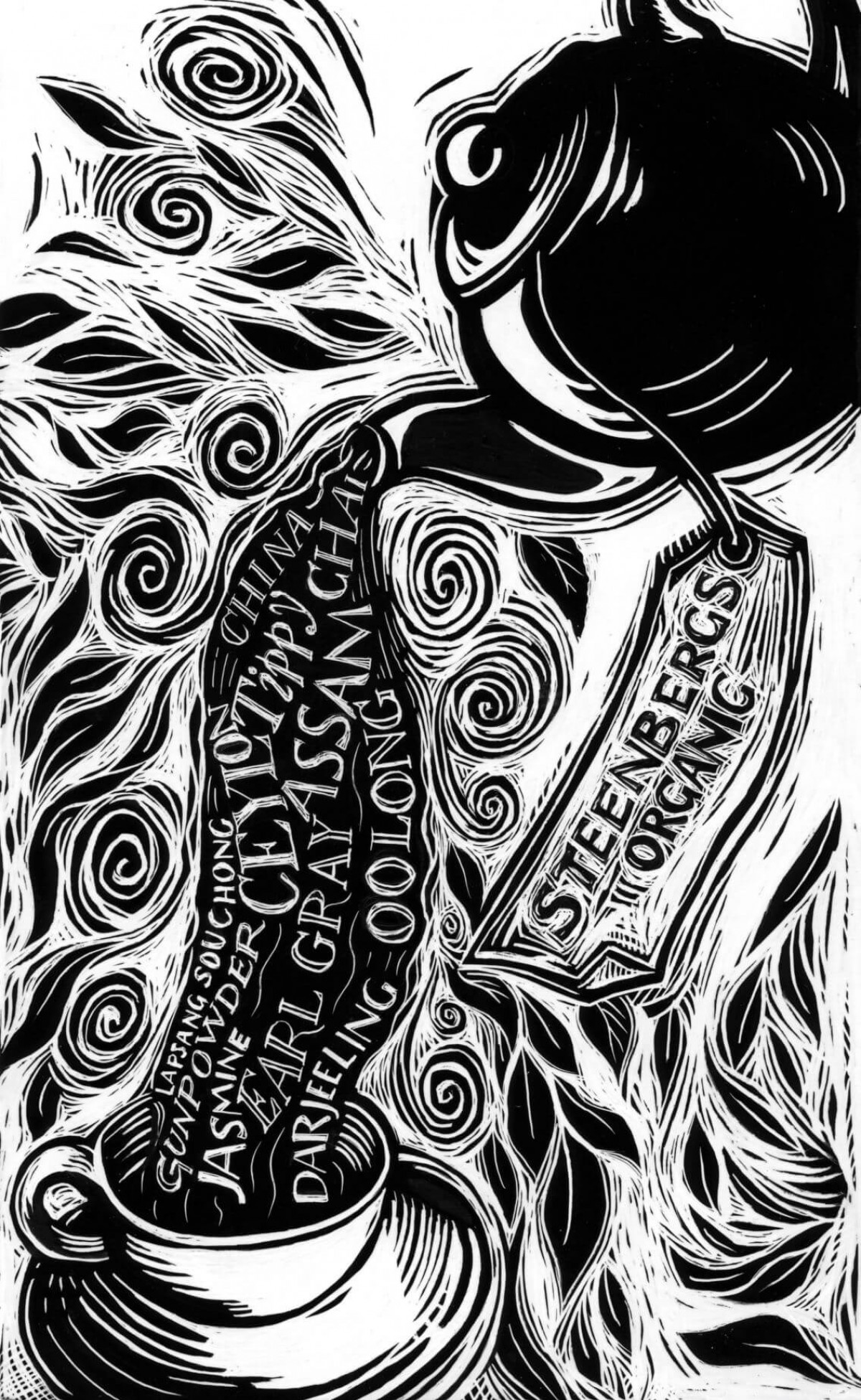How to make Tea
 We seem to have forgotten how to make tea - whether it's the result of a lack of time or trying unsuccessfully to extract some flavour from tea bags.
We seem to have forgotten how to make tea - whether it's the result of a lack of time or trying unsuccessfully to extract some flavour from tea bags.
Why is this? Is brewing tea an art form that requires an indulgent muse or a sacrifice to some un-named tea god? Or is proper tea brewing the product of military discipline or a Zen-like calm? Actually, all it needs is a little patience, some good quality tea, clean water and to follow some basic rules.
The key in making tea is (as in everything) to practice, practice and practice again.
A ROUGH GUIDE TO TEA MAKING
At Steenbergs Organic, we follow our golden tea-making rules:
- Fill the kettle with freshly-drawn cold water which is well mixed with oxygen (boiled water has lost its oxygen). Oxygen is vital to bring out the taste and aroma
- Fill the tea-pot with boiling water, to warm the tea-pot and so prevent the brew from cooling too quickly then pour out as more water comes to the boil
- Measure the organic tea carefully - for strong organic Fairtrade tea, use 1 teaspoon per person and 1 for the pot; for large leaf organic Fairtrade teas, ½ teaspoon per person is ideal (or see our more detailed charts below)
- Fill the kettle with more freshly-drawn cold water, pour away warm water in tea-pot and pour the new water into the pot as it boils, because off-the-boil water makes very dull tea. Infuse for 5 minutes (see below). A quick brew never gets the full flavour from the organic tea leaves, whereas a long brew is astringent
- Add milk first, because milk dissolves better in hotter liquid
- Ceramic and china teapots keep warmer for longer and don't taint the organic tea. Even better are cast iron tea pots, although they are a bit expensive. Never ever bleach the teapot
- Sit back, relax and enjoy!
STEENBERGS' TEA BREWING CHARTS
Here is Axel Steenberg's legendary quick bluffers guide to everything about making organic Fairtrade tea:
|
Tea type |
Tsp in pot |
Milk |
Strength |
Time of day |
|
2 - 3 |
O |
2 |
PM |
|
|
First Flush Darjeeling |
1 |
N |
1 |
PM |
|
3 - 4 |
Y |
3 |
Allday |
|
|
3 - 4 |
Y |
4 |
Allday |
|
|
Orange Pekoe |
2 - 3 |
O |
3 |
Allday |
|
1 - 3 |
O |
2 |
Allday |
|
|
1 |
N |
1 |
PM |
|
|
1 |
N |
1 |
PM |
|
|
Lapsang Souchong |
1 |
N |
1 |
PM |
|
Yunnan |
1 - 3 |
O |
2 |
PM |
|
1 - 3 |
O |
2 |
PM |
|
|
Japanese Sencha |
1 |
N |
1 |
PM |
|
Nilgiri |
2 - 4 |
O |
2 |
PM |
Key: Y = Yes O = optional N = No
Here's a handy table that gives a little more detail on tea brewing times:
|
Tea type |
Brewing time |
Water temperature |
|
5 minutes |
Boiling water |
|
|
3 minutes |
Let water cool for about 1 minute after coming to the boil; it should be 65 - 70°C (150 - 175°F) |
|
|
Oolong tea |
7 minutes |
Let the water rest for 30 seconds after coming to the boil |
|
5 minutes |
Boiling water |
|
For these tables, we have assumed a classic family-sized tea pot - enough for 6 cups.




